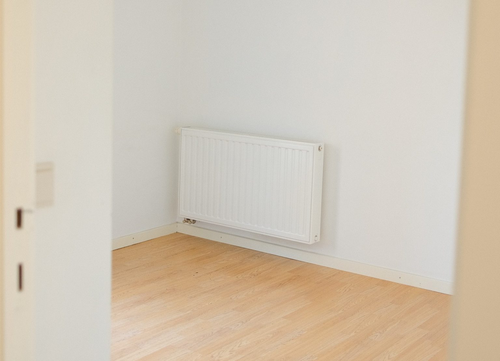When it comes to selecting a heating system for your home, the choice often boils down to radiant heat versus forced air, each offering distinct advantages and considerations.
Understanding the nuances of both heating methods is essential for homeowners and builders alike to make an informed decision that optimizes comfort, efficiency, and overall satisfaction with their heating system choice.
Choosing between radiant heat and forced air comes down to understanding what is radiant heat and finding out which system sings in tune with your comfort needs.
Radiant heating systems vs. Forced air systems
Radiant heating systems perform by directly warming the floors or panels in the walls or ceilings of a home, thereby radiating heat into the room. This method promotes even heat distribution and minimizes the circulation of dust and allergens, offering a cozy warmth that directly affects the living space and its occupants.
On the other hand, forced air systems heat air, which is then distributed throughout the home via ductwork and vents. This method allows for quicker heating of a space and the ability to filter and humidify the air as it circulates.
The fundamental difference lies in how heat is distributed – radiant heat provides a steady, even warmth directly to surfaces in the room. In contrast, forced air heats the air itself, leading to faster changes in temperature.
Energy efficiency
When it comes to energy efficiency, radiant heat systems often have the upper hand over forced air systems, primarily due to how heat is distributed. Radiant floors work by directly heating the objects and people in a room, which means the warmth is retained longer and distributed more evenly.
This direct heat transfer method reduces energy loss, as there’s less need to constantly reheat the air due to escaping warmth, which is a common issue with forced air systems. Consequently, many homeowners find that radiant heat systems result in lower utility bills, particularly in well-insulated homes where heat retention is maximized.
While forced air systems can quickly heat a space, they can suffer from efficiency losses through ductwork leaks or poor insulation, especially in older homes. Heated air can escape before reaching its intended destination, requiring the furnace to work harder and utilize more energy to maintain the desired temperature.
Cost
When assessing the operational costs between types of heating systems, it’s important to consider the long-term savings potential. Initially, radiant heating systems may demand a higher installation cost, particularly if retrofitting an existing home.
However, their energy efficiency translates into lower monthly utility bills. Radiant heat systems deliver heat directly and maintain temperatures using less energy, thereby offering potential savings over time.
Despite having a lower upfront cost, forced air systems might lead to higher operational costs due to inefficiencies, such as heat loss through ductwork. This is especially true in older homes where duct sealing and insulation may be less than optimal.
Therefore, while the immediate installation costs are generally lower for forced air systems, the long-term energy consumption can offset these initial savings, particularly in areas with extreme weather conditions that demand continuous heating or cooling.
Installation and maintenance
Installation and maintenance requirements for radiant heat and forced air systems play a significant role in determining the right choice for your comfort and convenience.
Radiant heating systems, especially when installed in existing homes, can present a more complex and invasive installation process, as floors may need to be deconstructed and reconstructed to lay down the heating elements. Once installed, however, radiant systems generally require minimal maintenance, contributing to their appeal for homeowners seeking a low-maintenance solution.
Forced air systems, on the other hand, are easier and less costly to install, particularly in new construction or homes that already have ductwork in place. Maintenance is more regular than with radiant systems, including tasks such as changing air filters and annual inspections to ensure optimal performance.
Moreover, this ease of installation and higher maintenance needs should be carefully weighed against your personal comfort preferences and long-term living arrangements.
Environmental impact
The environmental impact of heating systems is critical amidst growing concerns over climate change and carbon emissions. Radiant heat systems, particularly those powered by renewable energy sources like solar or geothermal power, have a significantly reduced carbon footprint.
This compatibility with green energy minimizes reliance on fossil fuels and enhances the sustainability of heating solutions in homes. Additionally, the efficient distribution of heat in radiant systems reduces overall energy consumption, further lowering carbon emissions.
Forced air systems, while potentially compatible with renewable energy sources, often depend on gas or electricity derived from non-renewable resources. Though modern forced air systems can be efficient, their environmental impact is contingent upon the energy source and the efficiency of the home’s insulation and ductwork.
The adoption of high-efficiency units and the integration of renewable energy can lessen their environmental footprint. Yet, the potential for energy loss through ductwork remains a challenge for achieving optimal sustainability.




